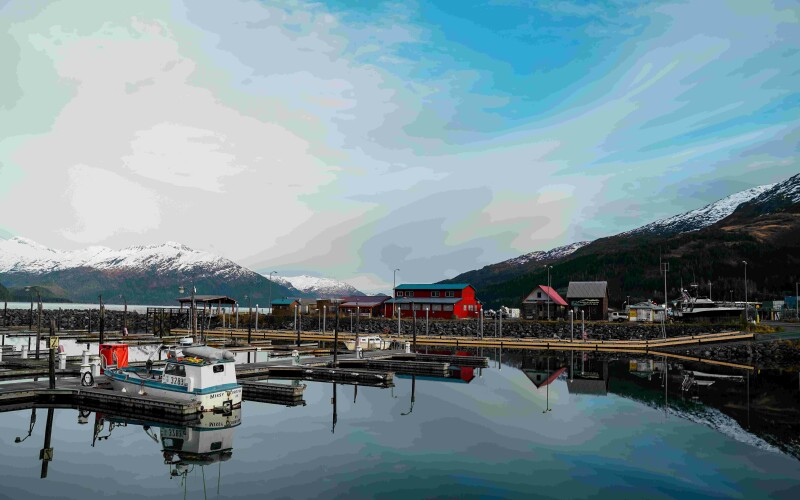NOAA Fisheries released the 2023 Ecosystem Status Reports for the eastern Bering Sea, Aleutian Islands, and the Gulf of Alaska. The reports provide the basis for current conditions and trends for critical oceanographic, biological, and ecological indicators in marine ecosystems.
Every year, fishery managers at NOAA, U.S. federal and state agencies, academic institutions, tribes, nonprofits, and scientists contribute to the reports. The data and information from these reports support federal commercial fish and crab fisheries management. For nearly three decades, fishery management has relied on these reports to understand further how commercial fish and crab populations are affected by changes in the marine environment.
“Warming at rates four times faster than the rest of the ocean, Alaska’s Arctic ecosystems are a bellwether for climate change. Now more than ever, ecosystem and climate-related data and information are essential to support adaptive resource management and resilient commercial, recreational, and subsistence fisheries, and rural and coastal communities,” said Robert Roy, director of Alaska Fisheries Science Center.
NOAA shared that 45 stock assessments and 16 stock-level risk assessments were performed this year and provided further contextual ecosystem information. Across the three ecosystems this year, the most notable indicators were:
- Ocean temperatures in both the Gulf of Alaska and the Bering Sea have cooled relative to the recent marine heatwave conditions, while the Aleutians remained warmer than average.
- Pacific Ocean perch remains the dominant groundfish in the Aleutian Islands, replacing pollock and Atka mackerel in the ecosystem. In contrast, the Gulf of Alaska ecosystem is now characterized by increased populations of Pacific Ocean perch and sablefish and reduced populations of Pacific cod, Pacific halibut, and arrowtooth flounder.
- There were some positive signs for Pacific cod recruitment in the Gulf of Alaska, even though adult population abundance remains low.
- Notable indicators of ecosystem health and potential threats to wildlife and human health: harmful algal blooms are becoming more prevalent in the northern Bering Sea, and paralytic shellfish toxins in sampled blue mussels from four Aleutian Islands communities were 47 times above the regulatory limit.
Gulf of Alaska
- Average year of productivity across the shelf marine ecosystem, continuing a multi-year trend expected to change in 2024.
- Total zooplankton biomass (prey for many groundfish species) declined to below average, but nutritious large copepods were more abundant in the central and eastern Gulf of Alaska.
- Prey availability for fish-eating groundfish (e.g., Pacific cod, sablefish, arrowtooth flounder, yelloweye rockfish) varied across the Gulf of Alaska and included increased capelin.
- The Gulf of Alaska groundfish community continues to be characterized by relatively increased sablefish and Pacific ocean perch populations and reduced populations of Pacific cod, Pacific halibut, and arrowtooth flounder.
- Sea surface temperatures are predicted to warm in 2024 due to El Niño conditions, potentially benefiting the survival of some larval groundfish (e.g., sablefish) and potentially harming the survival of others (e.g., larval Pacific cod).
Aleutian Islands
- Relatively stormy during winter 2022–23 and summer 2023.
- Warmest winter sea surface temperatures since 1900.
- Cooler (but still above average) spring-summer conditions.
- The upper mixed layer extended deeper than during 2022, potentially impacting prey's vertical distribution and availability throughout the water column.
- Seabird reproductive success in the eastern Aleutian Islands was at or above average, indicating wide availability of zooplankton and fish prey.
- Seabird reproductive success was mixed in the western Aleutian Islands.
- Eastern Kamchatka pink salmon abundance was the third highest on record.
- Paralytic shellfish toxins in blue mussels sampled in June were 47 times above the legal limit at Sand Point, Unalaska, False Point, and Akutan.
Bering Sea
- The Bering Sea ecosystem remains in a transitional state, with marine life like zooplankton and fish response lagging as the ecosystem recovers from record warm conditions during an unprecedented warm stanza (2014–2021).
- Chlorophyll-a, the marine food chain base, has generally been decreasing over the past decade, with 2023 among the lowest across the shelf.
- In the southeastern Bering Sea, young and adult pollock and several flatfish species had declining body conditions.
- Jellyfish, a potential competitor with groundfish for prey, have increased over the northern Bering Sea shelf but remained average in the southeastern Bering Sea.
- Slight increases in juvenile Chinook and chum salmon abundance in the northern Bering Sea.
- Several crab stocks showed continued declines in the eastern Bering Sea.
- Seabird reproductive success was mixed at the Pribilof Islands, with seabirds at St. George Island doing better than St. Paul Island.
Scientists also began testing a new modeling tool this year called the Dynamic Structural Equation Model, which allows scientists to understand better connections between different indicators and the factors that may be affecting increases and decreases in their abundance.
“We can estimate missing information, lags in indicator response to ecosystem changes, and the strength of connections between indicators,” said Elizabeth Siddon, the tool developer and a fisheries biologist at the Alaska Fisheries Science Center. “We are also excited about the potential to use this tool to project next year's conditions for some indicators.”







